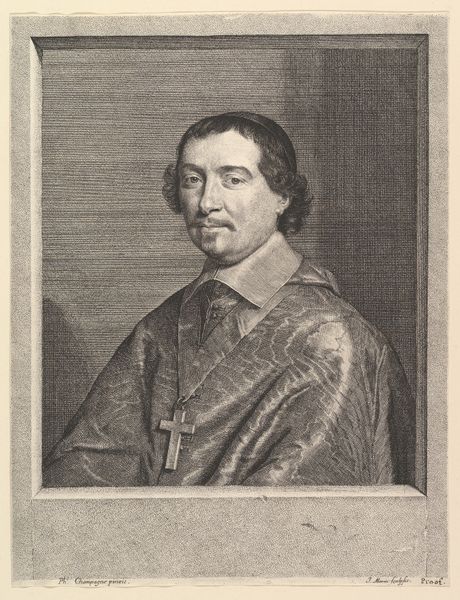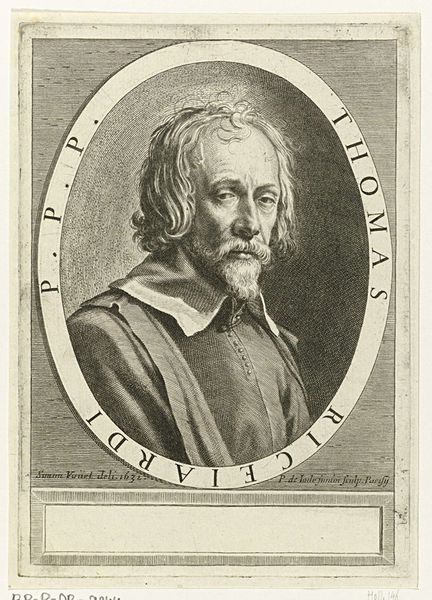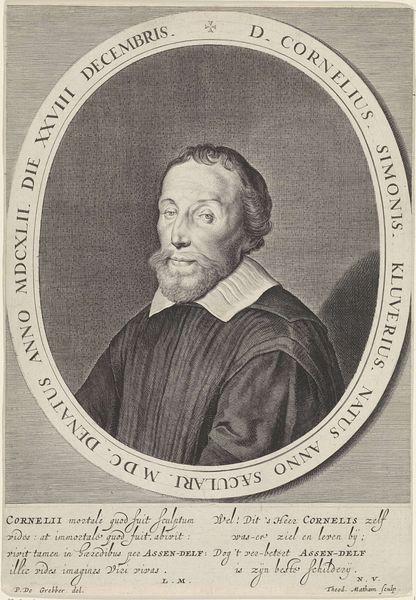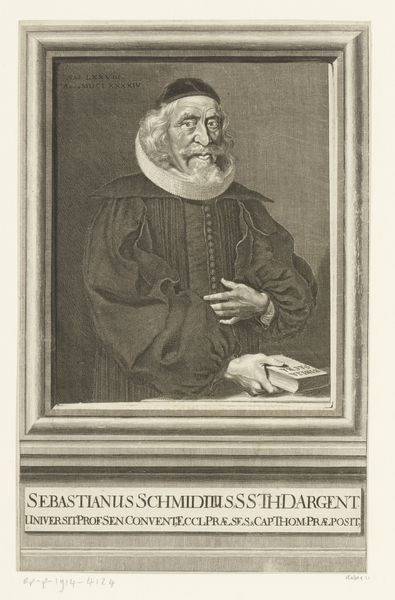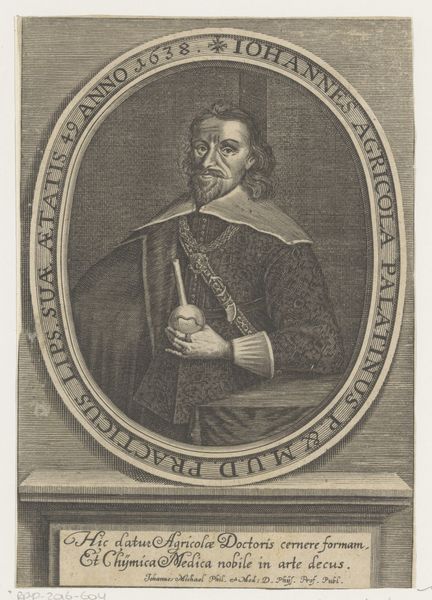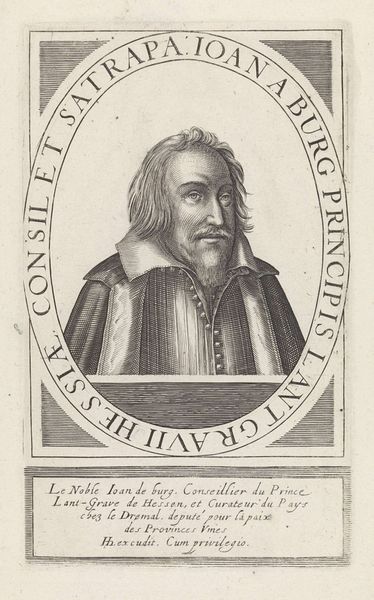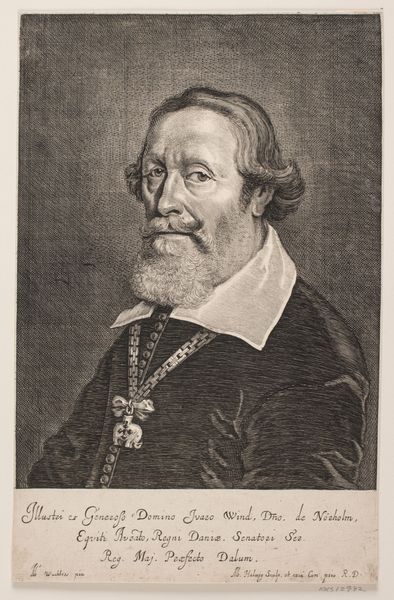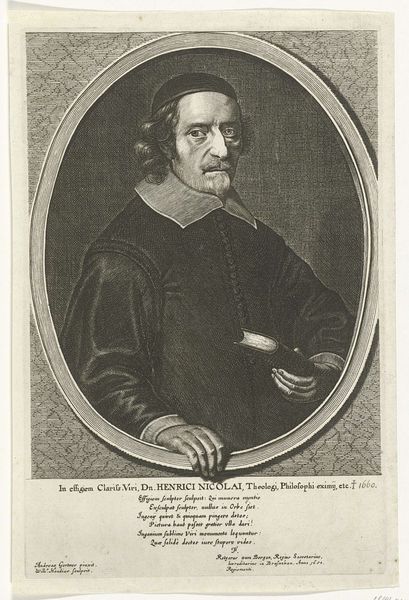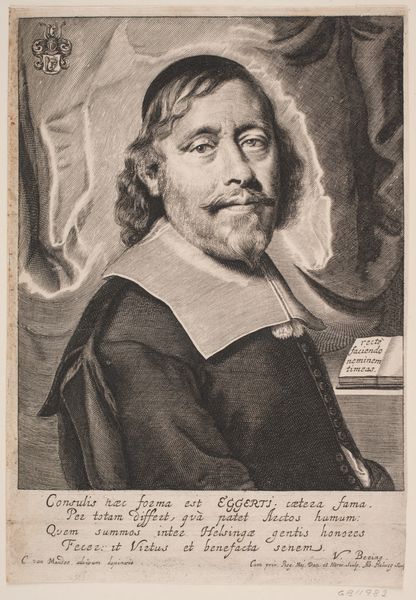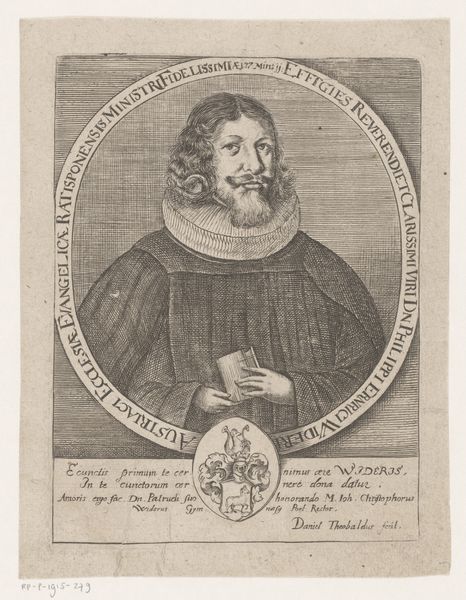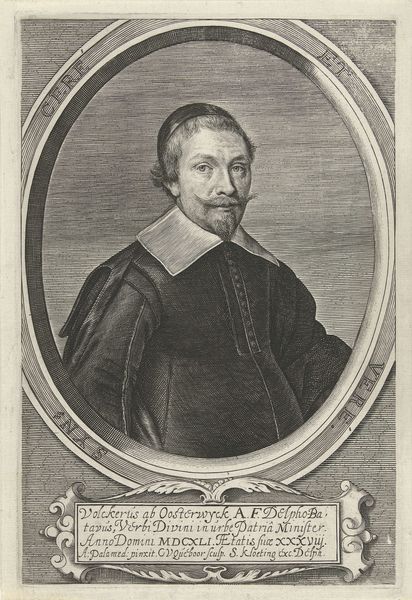
drawing, engraving
#
portrait
#
drawing
#
baroque
#
old engraving style
#
historical photography
#
historical fashion
#
history-painting
#
engraving
Dimensions: height 348 mm, width 246 mm
Copyright: Rijks Museum: Open Domain
Curator: Here we have Theodor Matham's "Portret van Cornelis Hassaeus," likely created between 1643 and 1676. It's currently held at the Rijksmuseum. It’s an engraving, which lends itself to the meticulous detail we see here. Editor: It’s somber, wouldn’t you say? The oval frame gives it a very formal, almost contained feeling. His gaze is direct, but something about the limited tonal range creates a very serious mood. Curator: The sober tone aligns perfectly with the sitter's status. Cornelis Hassaeus was a minister in Haarlem, a figure of considerable social importance at the time. Matham was likely commissioned to create this portrait as a means of preserving and disseminating his image. Note the inclusion of the crucifix; it isn’t just decoration. Editor: Absolutely, the crucifix acts as a potent emblem of his faith, carefully positioned for emphasis. It symbolizes sacrifice and spiritual devotion. You know, it strikes me how deliberate every element feels, like the selection of the typeface framing the portrait. It adds to a sense of formality but also an echo of timelessness. Curator: Engravings like these also circulated widely. Beyond simply representing Hassaeus, the print played an active role in shaping public perceptions. These portraits reinforced the social order by immortalizing those in positions of power, embedding them within the cultural landscape. It subtly legitimizes their influence. Editor: And I am sure every tiny inscription contributes to that message. In his hands, the figure of Christ almost transforms into a memento, carrying layers of meaning and emotional weight – devotion, morality, redemption. The choice to highlight that specific symbol would have resonated deeply with viewers. Curator: I concur, the portrait's impact resides in its strategic deployment within 17th-century Dutch society. It reflects the interplay between religious authority, civic identity, and the burgeoning print culture of the period. Editor: Considering how much detail is etched here, the final image carries a complex web of values and concerns. Fascinating to witness these messages coalesce centuries later.
Comments
No comments
Be the first to comment and join the conversation on the ultimate creative platform.


